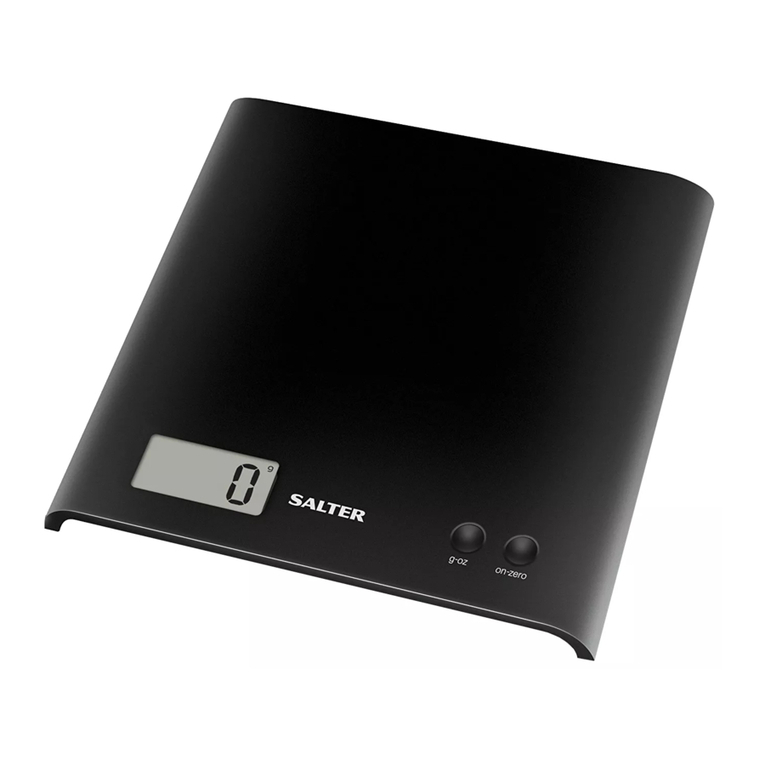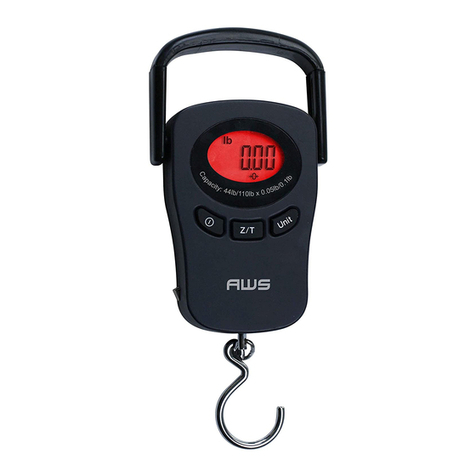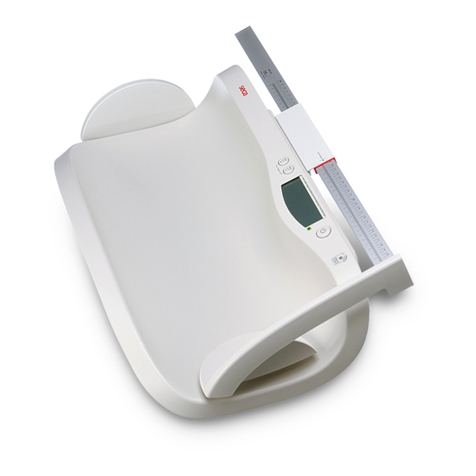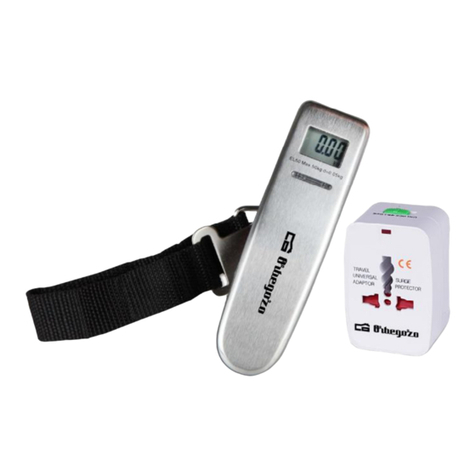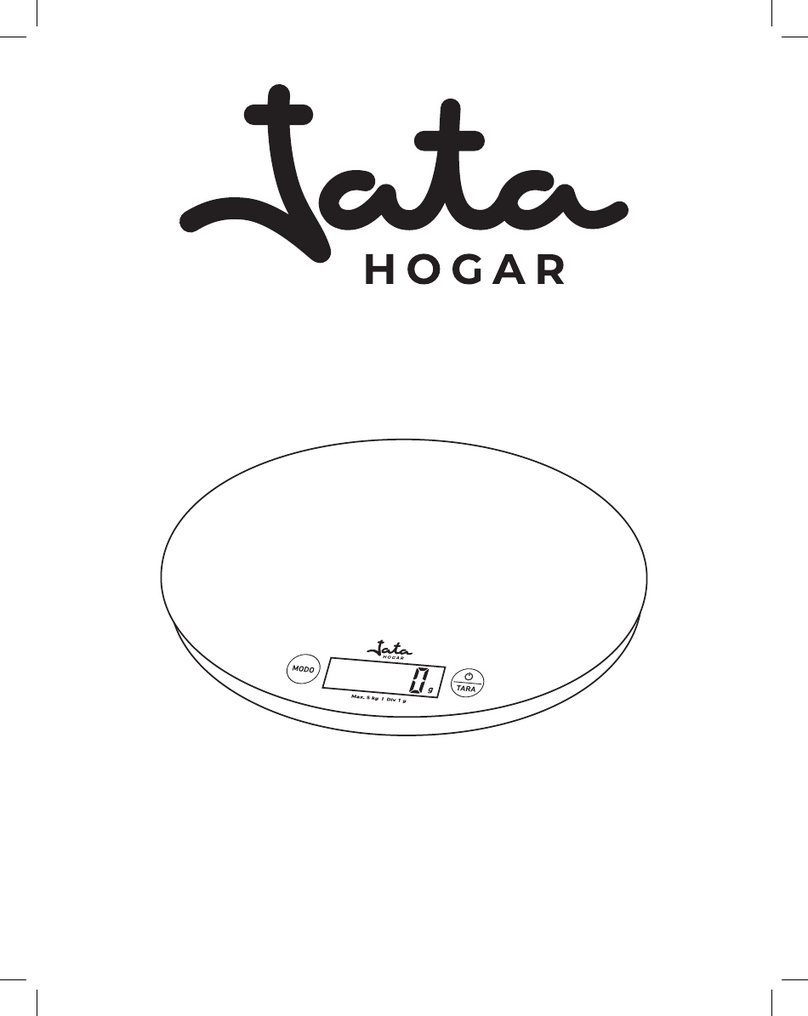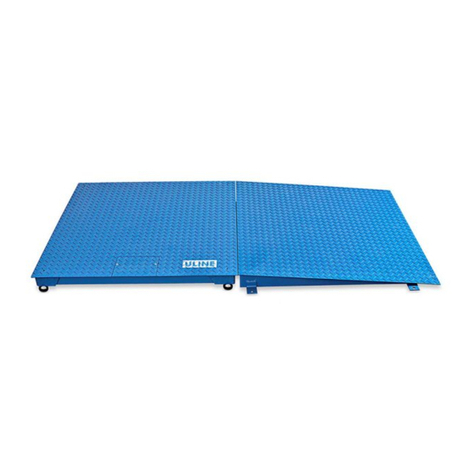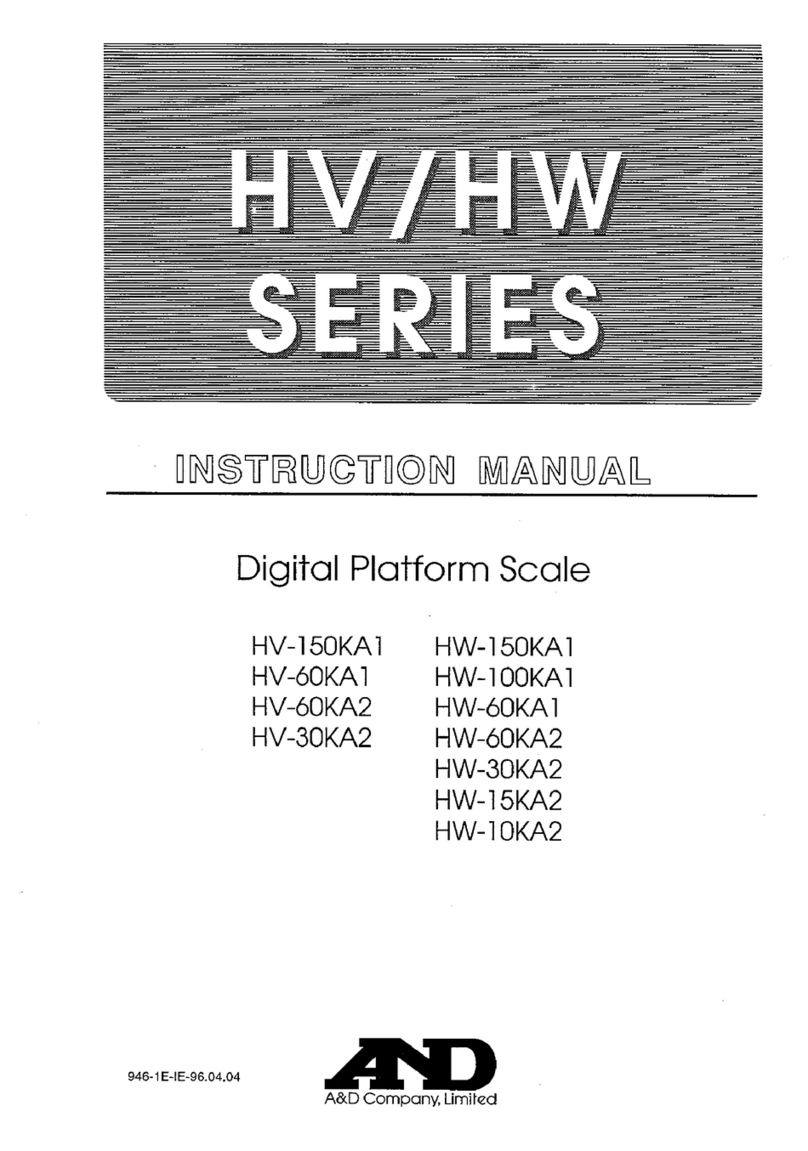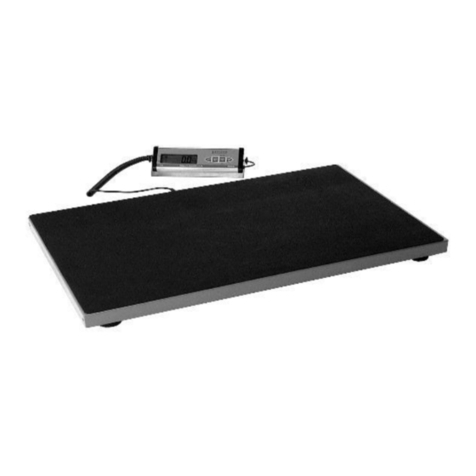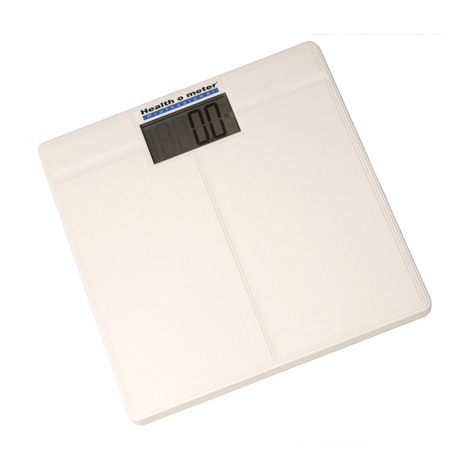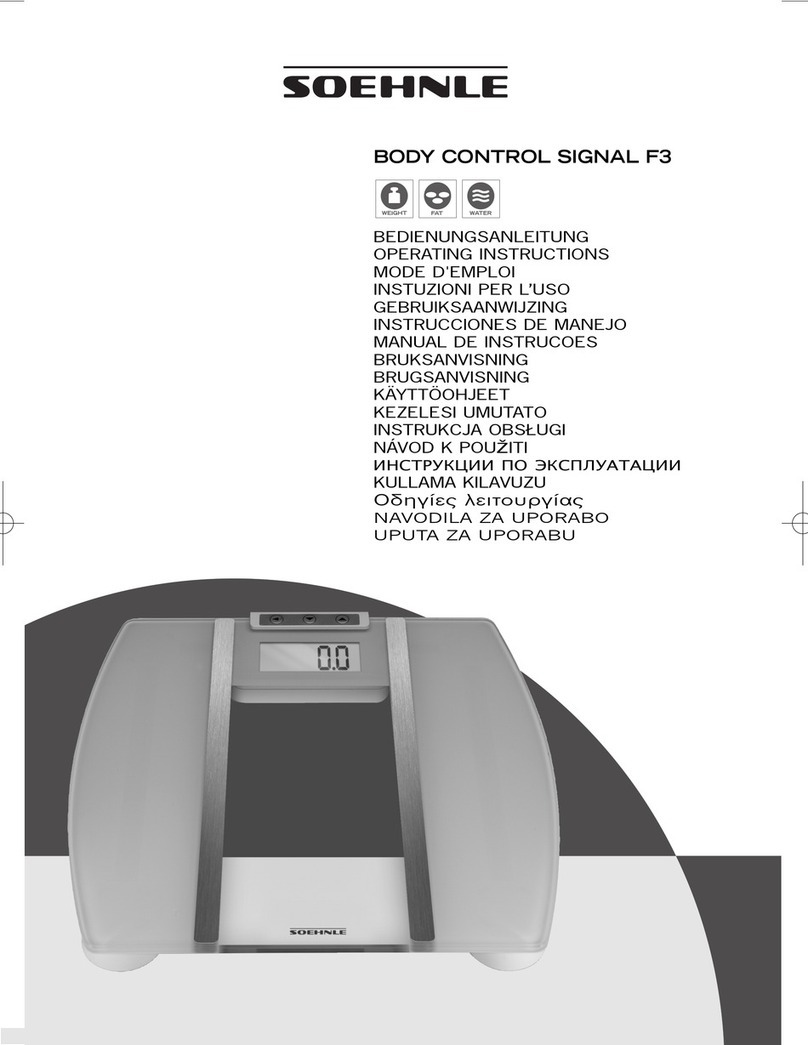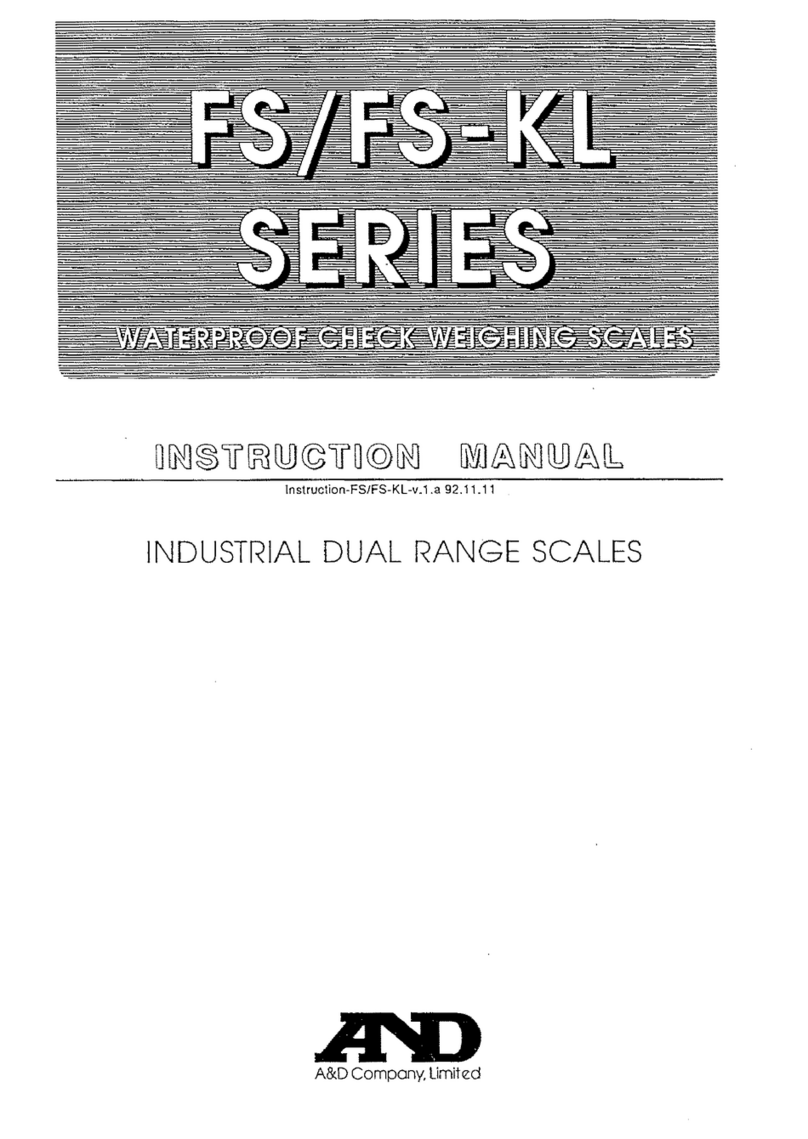IDOL IDOL-100 User manual

IDOL-100 (100g x 0.01g)
IDOL-1KG (1000g x 0.1g)
User Manual
IDOL
Copyright © 2012 American Weigh Scales, Inc.
All rights reserved. Rev. 2.0
English
Français
Español

IDOL Manual
Thank you for purchasing the American Weigh IDOL
digital pocket scale. Please read all operating instructions
carefully before use. Scales are precision measuring devices
and should always be handled with proper care. To ensure
years of reliable service, keep these simple tips in mind:
• Do not exceed the scale’s maximum capacity. This
scale has integrated overload protection, but any
overload protection has its limits!
• Avoid exposure to extreme heat or cold. Scales
perform best at normal room temperature. If
temperatures have changed dramatically, recalibration
may be necessary.
• Allow your scale to warm up for 30-60 seconds before
performing calibration (if available).
• Store your scale in a clean, dry location. Dust, dirt,
and moisture can accumulate on the weighing
sensors and electronics causing inaccuracy or
malfunction.
• Avoid using your scale in close proximity to strong
radio wave emitting devices such as cordless phones.
• Always weigh on a at and level surface, free from
vibrations and drafts. The corner of a room is usually
the most stable.
• Gently apply all items to be weighed. Do not drop
items onto the weighing platform.
• Avoid dropping your scale. The warranty does not
cover damage due to rough treatment or overload.
• Check the batteries rst if you are having any trouble
with your scale. This simple step can remedy most
scale issues.
• Calibration should be checked and adjusted
occasionally as part of routine scale maintenance.
- English

MODE ON/OFF TARE
g
I. Part List
1. Scale
2. AAA Batteries (x2)
II. Key Description
1. Mode Key - Tap to change the displayed unit of
measure. Hold to enter calibration (see VII).
2. ON/OFF - Turns the scale on or off.
3. Tare Key - Re-zeros the scale. Used to remove the
weight of a tray or container.
III. Battery Installation
Proper Battery Installation
2.
1. 3.
MODE ON/OFF TARE
g

IDOL Manual
Low batteries can cause inaccuracy in digital scales. If
you are experiencing issues with your scale, rst try new
batteries. Most times, this will solve the problem.
1. Before using the scale for the rst time, check
the battery compartment and remove any plastic
insulation strips or packaging that may be in place to
prevent battery drainage during shipping/storage.
2. If you are replacing the batteries, make sure the
positive and negative contacts are properly aligned.
IV. Operation
1. Place the scale on a at, level surface and press the
ON/OFF key to turn the scale on.
2. Once the start-up process completes and the scale
goes to zero you are ready to weigh.
3. Place the quantity to be weighed onto the weighing
platform.
4. Wait a couple seconds for the display to stabilize
before taking a weight reading.
5. To turn the scale OFF, press the ON/OFF key again.
The scale will turn off automatically after 2 min. of
inactivity.
V. Changing the Unit of Measure
1. Press the MODE key to change the scales displayed
unit of measure.
2. If the scale is turned off then back on, it will default
to the last unit used.
• IDOL-100 & IDOL-1KG Units: g (gram) oz
(ounce) ozt (troy ounce) dwt (pennyweight) ct
(carat) gn (grain)
- English

VI. Using the Tare Feature
You can use this scale’s tare feature to subtract the weight
of an empty container or vessel for net weight determination.
NOTE: The weight of the container will subtract from the
available capacity (subtractive taring).
1. Place the empty container or vessel on the weighing
platform.
2. Press the TARE key once. The display will then
reset to zero. If the container is removed, its weight
will be displayed as a negative number.
3. You may now ll the container with the quantity to
be weighed. The display will show the net weight of
the contents.
4. To return to normal weight display (gross weight),
remove any items from the weighing platform and
press the TARE key again to re-zero the scale.
VII. Calibration
Initial calibration is performed at the factory. However, the
calibration can drift slightly due to stresses from shipping.
Also, due to changes in local gravity around the world,
adjustment is recommended when moving the scale from
one location to another. To check calibration:
1. Place the required calibration weight on the scale
and note the displayed value.
2. If the displayed value is not within acceptable
tolerance (see chart on next page), adjustment is
required.

IDOL Manual
Model Acceptable
Tolerance (±)
Calibration
Weight
Recommended
Accuracy Class
IDOL-100 0.02g 100g OIML M2
IDOL-1KG 0.2g 500g OIML M2
VIII. Adjustment
1. Press and hold the MODE key until the display
shows “CAL”
2. Make sure nothing is on the scale platform then
press the MODE key again.
3. The display will ash “CAL” followed by the required
calibration weight (see chart above).
4. Place the required calibration weight on the platform.
The display will ash “PASS” then return to normal
weighing mode. Adjustment is complete!
IX. Troubleshooting
• Problem: Scale will not turn on
• Solution: Check the batteries and battery contacts.
• Problem: Displayed weight uctuates randomly
• Solution: Make sure your workspace is stable and
free of any air currents or vibration. In some cases,
nearby radio wave emitting devices can cause
uctuations.
• Problem: Displayed weight is inaccurate
• Solution: Perform a calibration adjustment. If
you are still having trouble, contact our warranty
department.
- English

X. Error Codes
1. OUTZ - Zero point has drifted out of the acceptable
range. Try to perform a calibration adjustment. If the
problem persists, the load cell may be permanently
damaged due to overloading.
2. O-Ld - Overload. The maximum capacity has
been exceeded. Remove the extra weight to avoid
permanently damaging the load cell.
3. Lo - Batteries are low. Replace the batteries.
XI. Specications
IDOL-100 IDOL-1KG
Max. Capacity 100g 1000g
Readability 0.01g 0.1g
Min. Weight 0.02g 0.2g
Power 2 x 1.5V “AAA” Alkaline
Dimensions 2.7 x 4.4 x 1.1 in.
Platform Dimensions 2.3 x 2.6 in.
Warranty 10 Year Limited Warranty
XII. Capacity/Readability Chart
IDOL-100 IDOL-1KG
100g x 0.01g
3.527oz x 0.001oz
3.215ozt x 0.001ozt
64.30dwt x 0.01dwt
500ct x 0.05ct
1543.2gn x 0.2gn
1000g x 0.1g
35.27oz x 0.01oz
32.15ozt x 0.01ozt
643.0dwt x 0.1dwt
5000ct x 0.5ct
15432gn x 2gn

IDOL Manual
Merci d’avoir acheté cette balance numérique de
poche IDOL d’American Weigh. Veuillez lire le mode d’emploi
attentivement avant utilisation. Les balances sont des appareils
de mesure de précision et doivent toujours être manipulées avec
soin. Pour assurer un fonctionnement able des années durant,
veuillez garder ces simples conseils à l’esprit :
• Ne pas dépasser la capacité maximale de la balance.
Cette balance possède une protection intégrée anti-
surcharge, mais même une protection anti-surcharge a ses
limites!
• Éviter d’exposer la balance à des températures extrêmes,
chaudes ou froides. Les balances fonctionnent mieux à
des températures normales. Si la température a nettement
changé, un nouveau calibrage pourrait être nécessaire.
• Laisser la balance chauffer pendant 30-60 secondes avant
d’effectuer le calibrage (si disponible).
• Ranger la balance dans un endroit propre et sec.
Poussière, saleté et humidité peuvent s’accumuler sur
les capteurs de pesage et sur les circuits électroniques
occasionnant imprécisions et dysfonctionnements.
• Éviter d’utiliser la balance à proximité immédiate
d’appareils émettant des ondes radio tels que les
téléphones sans l.
• Toujours utiliser la balance sur une surface plane et
horizontale, sans vibrations ni courants d’air. L’angle d’une
pièce est souvent l’endroit le plus stable.
• Poser délicatement les objets devant être pesés. Ne pas
laisser tomber les objets sur la plate-forme de pesage.
• Éviter de laisser tomber la balance. La garantie ne couvre
pas les dégâts causés par un traitement brutal ou une
surcharge.
• Vérier les piles si un problème est détecté sur la balance.
Cette étape simple permet de remédier à la plupart des
problèmes.
• Pour une meilleure précision, le calibrage doit être vérié
et éventuellement ajusté dans le cadre de contrôles de
routine.
- Français

MODE ON/OFF TARE
g
XIII. Éléments
1. Balance
2. Piles AAA (x2)
XIV. Description des touches
1. Touche Mode - Appuyez pour modier l’unité
de mesure afchée. Maintenir pour accéder au
calibrage (voir VII).
2. ON/OFF - Allume ou éteint la balance.
3. Touche Tare - Remets la balance à zéro. Utilisé
pour retirer le poids d’un plateau ou d’un contenant.
XV. Installation des piles
Installation correcte des piles
2.
1. 3.
MODE ON/OFF TARE
g

IDOL Manual
Des piles faibles peuvent entraîner l’imprécision des balances digitales.
Si vous rencontrez des problèmes avec votre balance, commencez par
essayer avec des piles neuves. Dans la plupart des cas, cela résoudra
le problème.
1. Avant d’utiliser la balance pour la première fois, vériez le
compartiment des piles et retirez tous les isolants en plastique
et éléments d’emballage présents pour éviter la décharge des
piles durant le transport ou le stockage.
2. En cas de remplacement des piles, vériez que les contacts
positifs et négatifs sont correctement alignés.
XVI. Fonctionnement
1. Placez la balance sur une surface plane et à niveau, et
appuyez sur le bouton ON/OFF pour allumer la balance.
2. Dès que le processus de démarrage est terminé et que la
balance afche zéro, vous pouvez commencer à peser.
3. Placez la quantité à peser sur le plateau de pesée.
4. Attendez quelques secondes jusqu’à la stabilisation de
l’afchage avant la lecture du poids.
5. Pour éteindre la balance, appuyez à nouveau sur le bouton
ON/OFF. La balance s’éteindra automatiquement après 2
minutes d’inactivité.
XVII. Changement de l’unité de mesure
1. Appuyez sur la touche MODE pour modier l’unité de mesure
afchée sur la balance.
2. Si la balance est éteinte puis allumée à nouveau, l’unité par
défaut sera la dernière utilisée.
• IDOL-100 et IDOL-1KG Unités : g (gramme) oz (once) ozt
(once troy) dwt (pennyweight) ct (carat) gn (grain)
XVIII. Utilisation de la fonction Tare
Vous pouvez utiliser la fonction tare de cette balance pour soustraire
le poids d’un contenant ou d’un récipient vide pour la détermination du
poids net. REMARQUE : Le poids du contenant sera soustrait de la
capacité disponible (tarage soustractif).
- Français

1. Placez le contenant ou le récipient vide sur le
plateau de pesée.
2. Appuyez une fois sur la touche TARE. L’afchage
sera remis à zéro. Si le contenant est retiré, son
poids sera afché en valeur négative.
3. Vous pouvez alors remplir le contenant avec la
quantité à peser. L’afchage indiquera le poids net
du contenu.
4. Pour revenir à l’afchage normal du poids (poids
brut), retirez tous les objets du plateau de pesée
et appuyez à nouveau sur la touche TARE pour
remettre la balance à zéro.
XIX. Calibrage
Le calibrage initial est réalisé à l’usine. Cependant, le
calibrage peut varier légèrement en raison des contraintes
lors du transport. De plus, en raison des différences
d’accélération gravitationnelle à travers le monde, il est
recommandé de procéder à l’ajustement lorsque la balance
est déplacée. Pour contrôler le calibrage :
1. Placez le poids de calibrage nécessaire sur la
balance et notez la valeur afchée.
2. Si la valeur n’est pas conforme à la tolérance
acceptable (voir le tableau en page suivante), un
ajustement est requis.

IDOL Manual
Modèle Tolérance
acceptable (±)
Poids de
calibrage
Classe de
précision
recommandée
IDOL-100 0.02g 100g OIML M2
IDOL-1KG 0.2g 500g OIML M2
XX. Adjustment
1. Press and hold the MODE key until the display shows “CAL”
2. Make sure nothing is on the scale platform then press the
MODE key again.
3. The display will ash “CAL” followed by the required calibration
weight (see chart above).
4. Place the required calibration weight on the platform. The
display will ash “PASS” then return to normal weighing mode.
Adjustment is complete!
XXI. Troubleshooting
• Problem: Scale will not turn on
• Solution: Check the batteries and battery contacts.
• Problem: Displayed weight uctuates randomly
• Solution: Make sure your workspace is stable and free of
any air currents or vibration. In some cases, nearby radio wave
emitting devices can cause uctuations.
• Problem: Displayed weight is inaccurate
• Solution: Perform a calibration adjustment. If you are still
having trouble, contact our warranty department.
XXII. Error Codes
1. OUTZ - Zero point has drifted out of the acceptable
range. Try to perform a calibration adjustment. If the
problem persists, the load cell may be permanently
- Français

damaged due to overloading.
2. O-Ld - Overload. The maximum capacity has
been exceeded. Remove the extra weight to avoid
permanently damaging the load cell.
3. Lo - Batteries are low. Replace the batteries.
XXIII. Specications
IDOL-100 IDOL-1KG
Max. Capacity 100g 1000g
Readability 0.01g 0.1g
Min. Weight 0.02g 0.2g
Power 2 x 1.5V “AAA” Alkaline
Dimensions 2.7 x 4.4 x 1.1 in.
Platform Dimensions 2.3 x 2.6 in.
Warranty 10 Year Limited Warranty
XXIV. Capacity/Readability Chart
IDOL-100 IDOL-1KG
100g x 0.01g
3.527oz x 0.001oz
3.215ozt x 0.001ozt
64.30dwt x 0.01dwt
500ct x 0.05ct
1543.2gn x 0.2gn
1000g x 0.1g
35.27oz x 0.01oz
32.15ozt x 0.01ozt
643.0dwt x 0.1dwt
5000ct x 0.5ct
15432gn x 2gn

IDOL Manual
Gracias por comprar la báscula digital de bolsillo American
Weigh IDOL-Series. Por favor, leer las instrucciones de uso
detalladamente antes de empezar a usarla. Las básculas son
dispositivos de medida de precisión y se deberían usar con
el cuidado necesario. Para asegurar que la báscula funcione
correctamente a lo largo de los años, seguir los siguientes
consejos: No sobrepasar el peso máximo permitido de la báscula.
Esta báscula tiene una protección para la sobrecarga, ¡pero
cualquier protección a la sobrecarga tiene sus límites!
• Evitar la exposición a calor o frío extremo. Las
básculas ofrecen el mejor funcionamiento cuando se
encuentran a temperatura ambiente. Si la temperatura
cambia de forma drástica, podría hacer falta recalibrarla.
• Permitir a la báscula iniciarse durante 30-60 segundos
antes de empezar a calibrarla (si está disponible).
• Guardar la escala en un lugar limpio y seco. El polvo,
la suciedad y la humedad se pueden acumular en los
sensores de peso y en las partes electrónicas causando
inexactitudes o mal funcionamiento.
• Evitar usar la escala en un lugar cercano a dispositivos
emisores de ondas de radio potentes como teléfonos
inalámbricos.
• Siempre realizar las mediciones en una supercie plana
y horizontal donde no haya vibraciones ni corrientes. La
esquina de una habitación suele ser el lugar más estable.
• Colocar suavemente los objetos que se vayan a pesar. No
dejar caer los objetos en la plataforma de peso.
• Evitar que la báscula se caiga. La garantía no cubre los
daños creados debido al uso indebido o a una sobrecarga.
• Si se tiene problemas con la báscula, comprobar las pilas
en primer lugar. Esta simple solución puede arreglar la
mayoría de los problemas de la báscula.
• Para una precisión óptima, se deberían realizar
calibraciones y ajustes de forma ocasional como parte de
la rutina de mantenimiento de la báscula.
- Español

MODE ON/OFF TARE
g
XXV. Lista de piezas
1. Báscula
2. Pilas AAA (x2)
XXVI. Descripción principal
1. Tecla de modo - Toque para cambiar la unidad de
medida indicada. Mantenga pulsado para entrar en
la calibración (véase VII).
2. ON/OFF - Enciende o apaga la báscula.
3. Tecla de tara - Ajusta el cero de la báscula. Se
utiliza para eliminar el peso de una bandeja o
contenedor.
Instalación de la batería
2.
1. 3.
MODE ON/OFF TARE
g

IDOL Manual
Low batteries can cause inaccuracy in digital scales. If
you are experiencing issues with your scale, rst try new
batteries. Most times, this will solve the problem.
1. Before using the scale for the rst time, check
the battery compartment and remove any plastic
insulation strips or packaging that may be in place to
prevent battery drainage during shipping/storage.
2. If you are replacing the batteries, make sure the
positive and negative contacts are properly aligned.
XXVIII. Operation
1. Place the scale on a at, level surface and press the
ON/OFF key to turn the scale on.
2. Once the start-up process completes and the scale
goes to zero you are ready to weigh.
3. Place the quantity to be weighed onto the weighing
platform.
4. Wait a couple seconds for the display to stabilize
before taking a weight reading.
5. To turn the scale OFF, press the ON/OFF key again.
The scale will turn off automatically after 2 min. of
inactivity.
XXIX. Changing the Unit of Measure
1. Press the MODE key to change the scales displayed
unit of measure.
2. If the scale is turned off then back on, it will default
to the last unit used.
• IDOL-100 & IDOL-1KG Units: g (gram) oz
(ounce) ozt (troy ounce) dwt (pennyweight) ct
(carat) gn (grain)
- Español

XXX. Using the Tare Feature
You can use this scale’s tare feature to subtract the weight
of an empty container or vessel for net weight determination.
NOTE: The weight of the container will subtract from the
available capacity (subtractive taring).
1. Place the empty container or vessel on the weighing
platform.
2. Press the TARE key once. The display will then
reset to zero. If the container is removed, its weight
will be displayed as a negative number.
3. You may now ll the container with the quantity to
be weighed. The display will show the net weight of
the contents.
4. To return to normal weight display (gross weight),
remove any items from the weighing platform and
press the TARE key again to re-zero the scale.
XXXI. Calibration
Initial calibration is performed at the factory. However, the
calibration can drift slightly due to stresses from shipping.
Also, due to changes in local gravity around the world,
adjustment is recommended when moving the scale from
one location to another. To check calibration:
1. Place the required calibration weight on the scale
and note the displayed value.
2. If the displayed value is not within acceptable
tolerance (see chart on next page), adjustment is
required.

IDOL Manual
Modèle Tolérance
acceptable (±)
Poids de
calibrage
Classe de
précision
recommandée
IDOL-100 0.02g 100g OIML M2
IDOL-1KG 0.2g 500g OIML M2
XXXII. Ajustement
1. Appuyez sur la touche MODE et maintenez là jusqu’à
l’afchage de la mention « CAL »
2. Assurez-vous qu’aucun poids n’est présent sur le plateau de
pesée et appuyez à nouveau sur la touche MODE.
3. La mention « CAL » clignotera sur l’écran LCD, suivie par le
poids de calibrage requis (voir tableau ci-dessus).
4. Placez le poids requis sur le plateau de pesée. La mention
« PASS » clignotera, puis la balance reviendra au mode de
pesée normale. L’ajustement est terminé!
XXXIII. Dépannage
• Problème : La balance ne s’allume pas
• Solution : Vériez les piles et les contacts des piles
• Problème : Le poids afché uctue aléatoirement
• Solution : Assurez que l’espace de travail est stable et à
l’abri des courants d’air et des vibrations. Dans certains cas,
la proximité avec des appareils émettant des ondes peut
entraîner des uctuations.
• Problème : Le poids afché est imprécis
• Solution : Réalisez un ajustement du calibrage. Si les
problèmes persistent, contactez notre service de garantie
XXXIV. Codes d’erreur
1. OUTZ - Le point zéro a dérivé au-delà de la plage acceptable.
Essayez un ajustement du calibrage. Si le problème persiste,
la cellule de charge est peut-être endommagée en raison
- Español

d’une surcharge.
2. O-Ld - Surcharge. La capacité maximale a été dépassée.
Retirez l’excédent de poids pour éviter l’endommagement
irréversible de la cellule de charge.
3. Lo - Les piles sont faibles. Remplacez les piles.
XXXV. Caractéristiques
IDOL-100 IDOL-1KG
Capacité maximale 100g 1000g
Lisibilité 0.01g 0.1g
Poids minimal 0.02g 0.2g
Alimentation 2 x 1.5V “AAA” Alkaline
Dimensions 2.7 x 4.4 x 1.1 in.
Dimensions du
plateau
2.3 x 2.6 in.
Garantie Garantie limitée de 10 ans
XXXVI. Capacité/Tableau de lisibilité
IDOL-100 IDOL-1KG
100g x 0.01g
3.527oz x 0.001oz
3.215ozt x 0.001ozt
64.30dwt x 0.01dwt
500ct x 0.05ct
1543.2gn x 0.2gn
1000g x 0.1g
35.27oz x 0.01oz
32.15ozt x 0.01ozt
643.0dwt x 0.1dwt
5000ct x 0.5ct
15432gn x 2gn

IDOL Manual
American Weigh Scales, Inc.
Cumming, GA 30041
Made In China to our exact
specications and quality control.
This manual suits for next models
1
Table of contents
